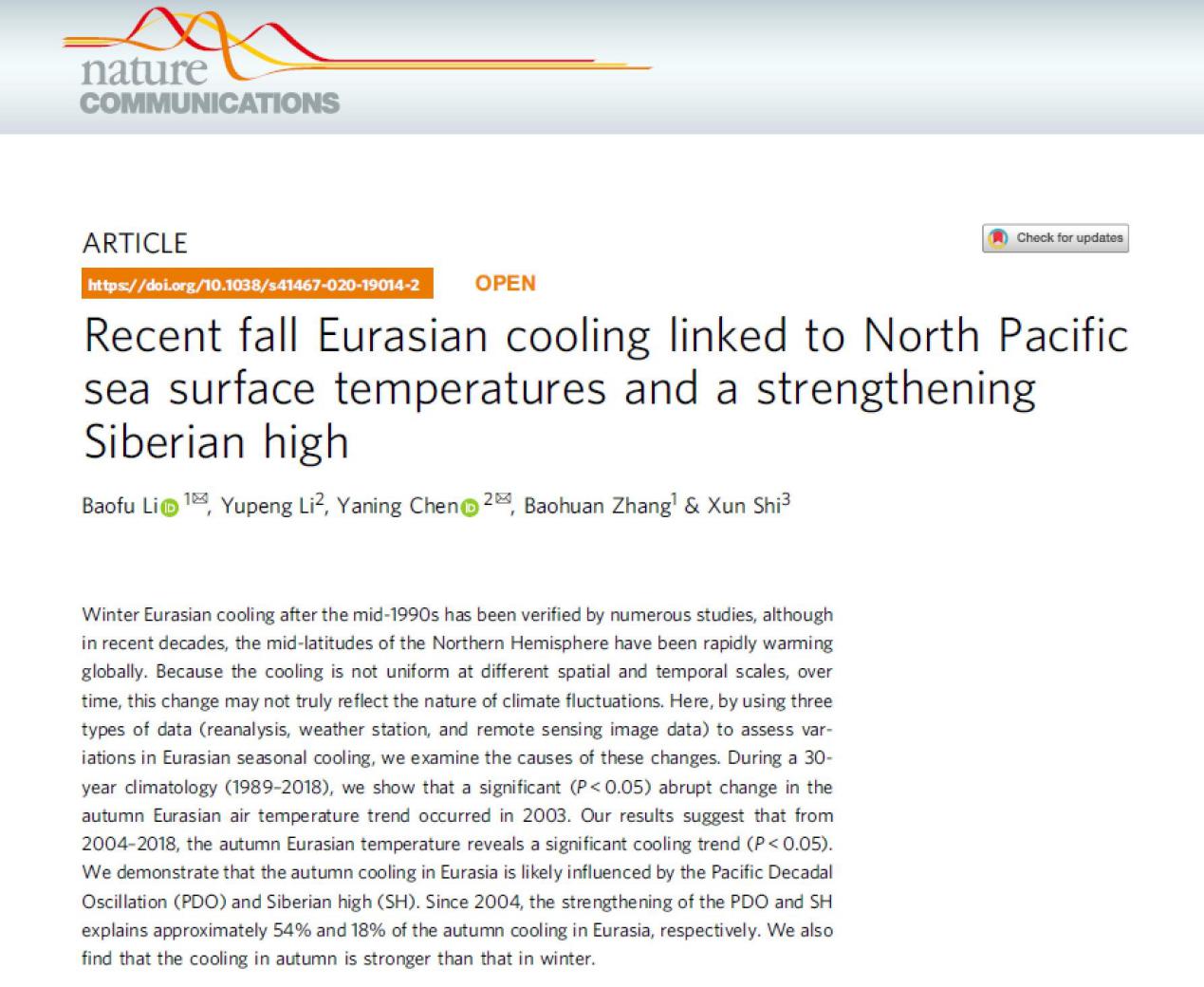Recently, associate professor Li Baofu of QFNU has published academic papers titled "Recent fall Eurasian cooling linked to North Pacific sea surface temperatures and a strengthening Siberian high" in the top international journal Nature Communications. Qufu Normal University was the first signing unit and the first correspondence unit. This was another breakthrough in the field of climate change after associate professor Li Baofu published articles on top journals such as J. Hydrol., Environ. Res. Lett.
Global climate change, represented by rising temperature, rising sea level and frequent extreme climate events, has brought severe challenges to human survival and development. Among them, the mid latitude region of the northern hemisphere is one of the regions with relatively fast heating rate. However, in recent years, it has been found that the winter in the Central Eurasian Continent in the mid latitude region is cooling after the mid-1990s. This unexpected change and its driving mechanism have attracted wide attention of the international community. However, there is no mutual understanding of the causes of winter cooling in Central Asia and Europe. Some studies suggest that this phenomenon may be related to the melting of Arctic sea ice, while others suggest that it is closely related to the fluctuation of atmospheric circulation (such as Arctic Oscillation). Therefore, the driving mechanism of winter cooling needs to be further explored.

Based on data reanalysis, MODIS surface temperature and meteorological station observation data, Li Baofu's team deeply analyzed the characteristics and mechanism of seasonal temperature change in Eurasian Continent from the perspective of global atmospheric dynamics. For the first time, the team found that the autumn cooling phenomenon occurred in Central Asia and Europe after 2004, and its cooling range and spatial range were larger than those in winter, and the driving mechanism of autumn cooling was significantly different from that in winter. At the same time, it is pointed out that the autumn cooling in the Central Eurasian Continent is mainly related to the change of surface temperature in the North Pacific (PDO) and the enhancement of Siberian high (SH). This achievement is of great scientific value for further understanding the evolution mechanism of global climate system.
 HOME
>
Content
HOME
>
Content

















 鲁公网安备 37088102000140号
鲁公网安备 37088102000140号